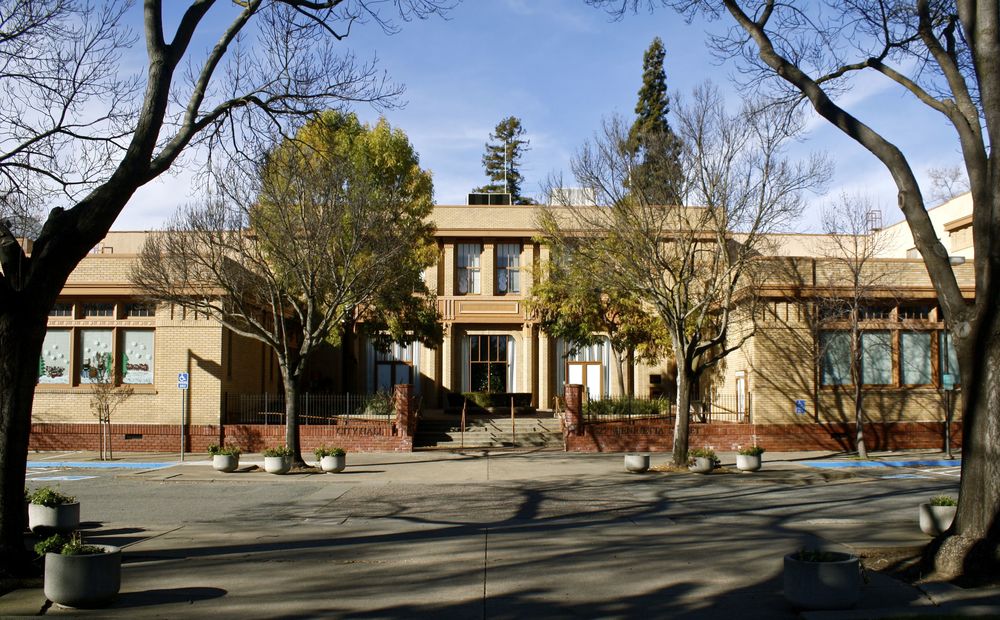MARTINEZ, Calif. – Depending on the results of last week’s meeting in Sacramento, Martinez City Hall could be under consideration as a historic resource.
Martinez author Kristin Henderson, who holds a master’s degree in library science and has been active in getting other Martinez areas and landmarks recognized for their historic significance, told the Martinez City Council Wednesday of the meeting with the State Historical Resources Commission, which was scheduled Friday morning, two days later.
Henderson’s 54-page draft of the application that eventually would be considered by the national register, is an illustrated reminder that City Hall, 525 Henrietta St., once was the Martinez Grammar School annex.
Besides Henderson’s research, the draft contains maps, plates, architectural drawings, several newspaper articles and period photographs from the Martinez Historical Society, the Contra Costa Historical Society and other sources, as well as pictures taken by Henderson herself.
Its architecture is described in the draft as “late 19th and early 20th century American movements,” specifically the Prairie School style that counts Frank Lloyd Wright as a central architect of the style and Sullivanesque, referring to Wright’s mentor, Louis H. Sullivan..
The building, which cost $49,000 to complete Aug. 24, 1917, was occupied for the first time Sept. 4, 1917.
It was converted to municipal use in 1956, according to the draft document. That is when its foreground, described as formerly a playground for St. Catherine’s school children, “is slated to become a city plaza.”
Ignacio Martinez Plaza sits between where the annex – City Hall – and the original school were built. An open recreation space, the plaza was donated by the Martinez family and was part of the Rancho El Pinole Mexican land grant to Ignacio Martinez, the draft document said.
The draft concedes the building, erected in 1917 as an annex to the 1909 grammar school, has “undergone numerous improvements, and the interior has lost almost all of its original school features,” but the building has kept “the character defining features and massing of the Prairie School architectural style.”
Mentioned in the draft are the long, flat rooflines, wings off the central massing, bands of fenestration that make up portions of wall planes, stylized and decorative brickwork and the use of pier, columns and pilasters.
The building’s Sullivanesque façade ornamentations are intact, and the building retains historic integrity, the document draft said.
Second story classrooms were added to the west side in 1928, and an the early 1990s, the building was modified again on its east side of the second story and a portion of the second story between the central massing and the 1928 addition.
The buff-colored veneer bricks were made at the Livermore Fire Brick Company in Livermore, and these were tied down during the early 1990s retrofit, the draft said.
The Sanborn maps, some of which date to 1949 and others to 1920, and some 2017-era photograph show that what now is the enclosed Martinez Police Department lobby was the school annex’s open play area. The east wing that has been enclosed in glass with steps also once was an open, covered area.
Some of the changes to the building have been made to comply with requirements that it be above the 100-year flood plain and that it be accessible to those with disabilities.
The document describes the building as being in excellent condition, especially after its 1990s retrofit that was undertaken after the 1989 Loma Prieta earthquake.
The document said the building still has integrity, and should be included as a historic place as a historic resource of Martinez, citing such reasons as the building having never been moved from 525 Henrietta St., its original footprint and designs, materials and workmanship, and the association former students have between the building and their school days.
The quarterly meeting in Sacramento of the State Historical Resources Commission had the item on its consent calendar, along with requests for similar consideration of McKinley Park in Sacramento, the St. Helena Public Cemetery in St. Helena and Thacher School in Ojai.






Thanks to Kristin for her appreciation of what is special about the Prairie style architecture and of what she refers to as “a silent symphony in brick and terra cotta”. I am a lover of Martinez from afar, not too far actually (Oakland).
I am involved as a tour leader for Oakland Heritage Alliance and board member of Tile Heritage Foundation. I met Kristin when she was researching her walking tour brochure on tiles of downtown Martinez and then a few years later I consulted about the tile component at the post office when she (successfully) nominated that building for listing on the National Register of Historic Places. She has a great eye for what is wonderful and distinct about buildings. She instinctively grasps the social and cultural importance of the rich layering of the built environment which we share. It is terribly important that people act upon this BEFORE key buildings are lost. Each of the buildings Kristin has championed over the years makes up an important part of unique character to the city. These are anchors,around which new buildings can sprout up. I am grateful for the work she has done.
Thanks Riley. This paper disallows me from commenting even on my own work–it is how it is around here. Power is more important than history, especially to the institutions involved with history.